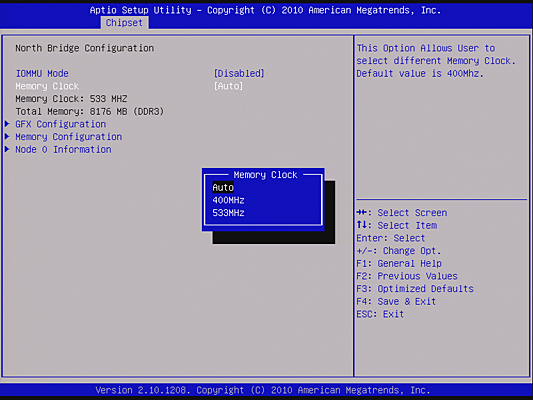The Brazos Round-Up: Eight AMD E-350-Based Motherboards
AMD’s Brazos platform, driven by the Zacate APU, offers a lot of performance per watt. It comes up short on features, though. Eight manufacturers try to change that perception by adding slots, controllers, and even overclocking in a couple of cases.
Sapphire Pure Fusion Mini E350
Sapphire’s entry into today’s comparison includes a few high-end features, such as a Bluetooth transceiver and rear-panel USB 3.0, while excluding others like integrated Wi-Fi and front-panel USB 3.0. That could give the firm a fairly good price advantage over full-feature competitors, while giving builders a little more flexibility in component selection.
The IPC-E350M1 does have a mini PCIe slot for adding a notebook wireless card of your own, supporting both half-length and full-length devices. With that provision in place, it’s a bummer that Sapphire doesn't provide a bracket in the I/O panel’s empty space for attaching your own antenna pass-through cables.
Five internal SATA connections complement a single eSATA port to fully address the chipset’s storage capabilities. That tops all of Sapphire’s competitors, though most ITX cases support fewer drives. Likewise, Sapphire is the only brand in today’s comparison to include digital audio input via a combined internal S/PDIF header.
Sapphire throws in a couple overclocking-friendly features in the Port 80 display and 4-pin CPU power connector, but those are purely for show, since the IPC-E350M1 doesn’t actually support overclocking.
Sapphire is one of several manufacturers to rely on SO-DIMM notebook memory rather than long DIMMs to conserve board space.
While we’re usually satisfied to see two SATA cables bundled with ITX motherboards, Sapphire's inclusion of five internal ports might make some users wish for more.
IPC-E350M1 Tuning
The IPC-E350M1 defaults to a 1.4% overclocking over AMD’s E-350 specifications, but does not support DDR3-1333. That forces our DDR3-1333-programmed memory to AMD’s reference DDR3-1066 specification.
There is no overclocking menu in IPC-E350M1 UEFI. Instead, we only find memory clocks of 400 and 533 MHz, which correspond to DDR3-800 and DDR3-1066.
Likewise, the Memory Configuration submenu does not contain timings, but simply sets bank interleaving to Enabled or Disabled.
Current page: Sapphire Pure Fusion Mini E350
Prev Page Jetway ND85-E350-LF Next Page Zotac FUSION-ITX WiFi A-seriesGet Tom's Hardware's best news and in-depth reviews, straight to your inbox.
-
gameworm The Zotac board actually is available on NeweggReply
http://www.newegg.com/Product/Product.aspx?Item=N82E16813500068
Only problem is that it is $160 instead of $130
Otherwise very nice roundup. I've been thinking of using one of these for a server/NAS. -
noob2222 Odd timing for the roundup, Llano just came out, these will be discontinued asap.Reply
Not good for much save storage, but that wasn't tested. Would have much rather see an A8 board roundup since they are on newegg now. Picked up one myself for my htpc/storage setup. -
Mathos noob2222Odd timing for the roundup, Llano just came out, these will be discontinued asap.Not good for much save storage, but that wasn't tested. Would have much rather see an A8 board roundup since they are on newegg now. Picked up one myself for my htpc/storage setup.Reply
Uh no, Brazos is bast on the Bobcat core which is a low power version of Bulldozer. These are meant for ultra portables and netbooks, nettops, ultrathin notebooks and the likes.
Llano is the entry level desktop APU until they switch from Stars cores on those to the newer bulldozer cores. -
noob2222 mathosUh no, Brazos is bast on the Bobcat core which is a low power version of Bulldozer. These are meant for ultra portables and netbooks, nettops, ultrathin notebooks and the likes.And yet this roundup is .... desktop boards.Reply
And brazos has nothing in common with bulldozer. -
BulkZerker mathosUh no, Brazos is bast on the Bobcat core which is a low power version of Bulldozer. These are meant for ultra portables and netbooks, nettops, ultrathin notebooks and the likes. Llano is the entry level desktop APU until they switch from Stars cores on those to the newer bulldozer cores.Reply
noob2222And yet this roundup is .... desktop boards. And brazos has nothing in common with bulldozer.
Net TOP. Meaning a low power ITX board. Brazos is merely a stopgap till AMD has the tooling to kick out tons of BD cores. Though I will agree this roundup is a bit late it is at least thorough. -
cangelini gamewormThe Zotac board actually is available on Newegghttp://www.newegg.com/Product/Prod 6813500068Only problem is that it is $160 instead of $130Otherwise very nice roundup. I've been thinking of using one of these for a server/NAS.Reply
Good call--that board only recently became available, after this story was scheduled to be published. We've since updated the conclusion and price chart to reflect the market as of July 4th, 2011.
Cheers,
Chris -
GaMEChld BulkZerkerNet TOP. Meaning a low power ITX board. Brazos is merely a stopgap till AMD has the tooling to kick out tons of BD cores. Though I will agree this roundup is a bit late it is at least thorough.Reply
Brazos is NOT a stopgap, it is meant for very low power applications. It's basically AMD's take on Atom style devices. Bulldozer is not meant to scale to this low power envelope. That's why there are already plans for Brazos successors. Ontario/Zacate will be replaced by Khrishna/Wichita. Llano will be succeeded by Trinity, which is Bulldozer based. Zambezi is supposed to be succeeded by something called Komodo, which I haven't read much about. -
silverblue Trinity and Komodo are both Enhanced Bulldozer. As such, Trinity will not be using Zambezi cores.Reply -
Well, aside from a few bits about Brazos being a stop-gap based on Bulldozer being wrong, the basic premise of "odd timing for a Brazos roundup" holds true.Reply
Llano for laptops is out-freaking-standing, Llano for desktops is amazing for cheap OEM-built desktops and small form-factor HTPCs. TBH, it shouldn't excite much of anyone else, nor was it intended to replace Phenom II + dGPU for enthusiasts.






